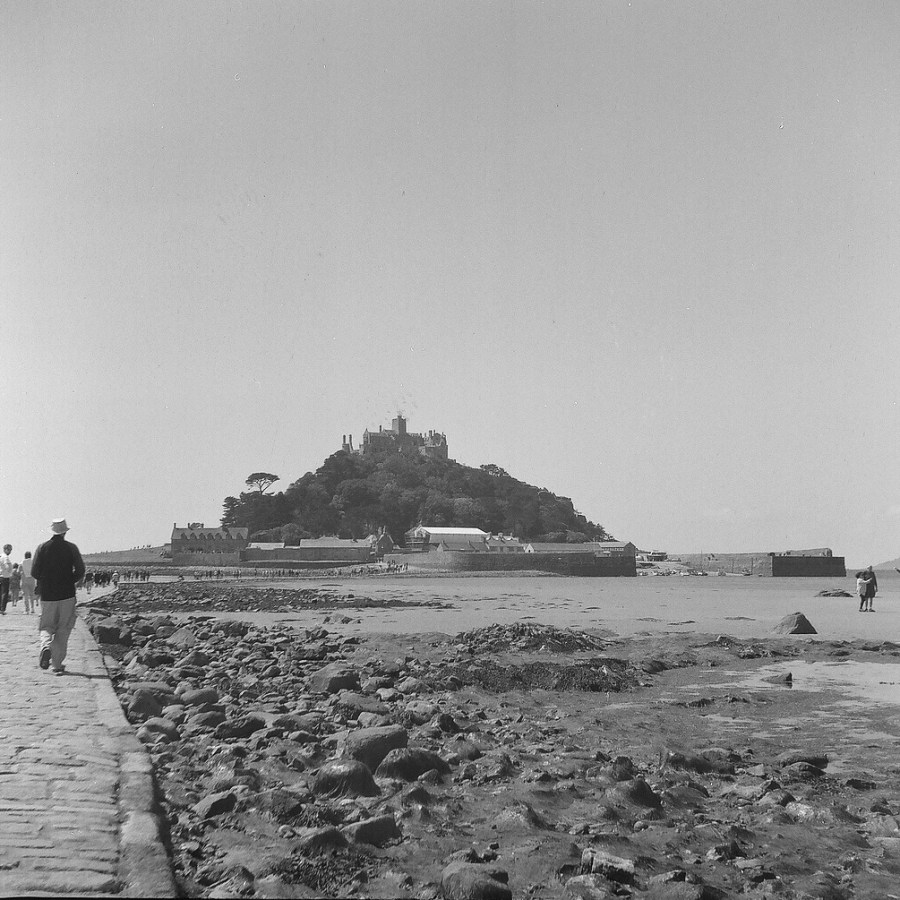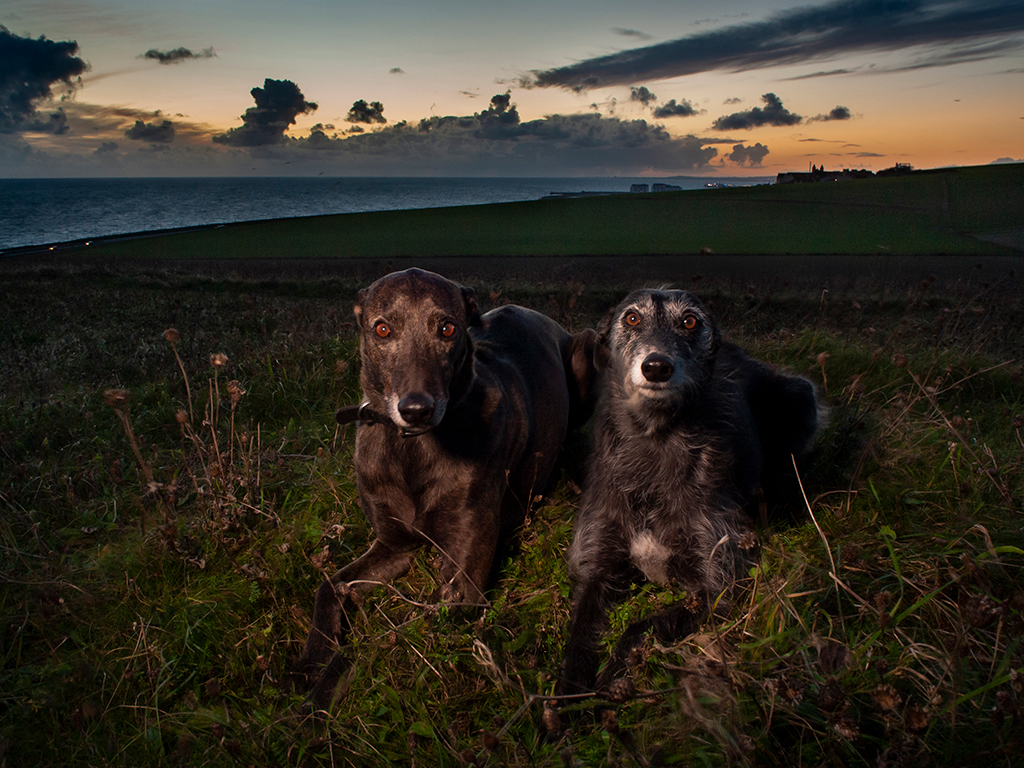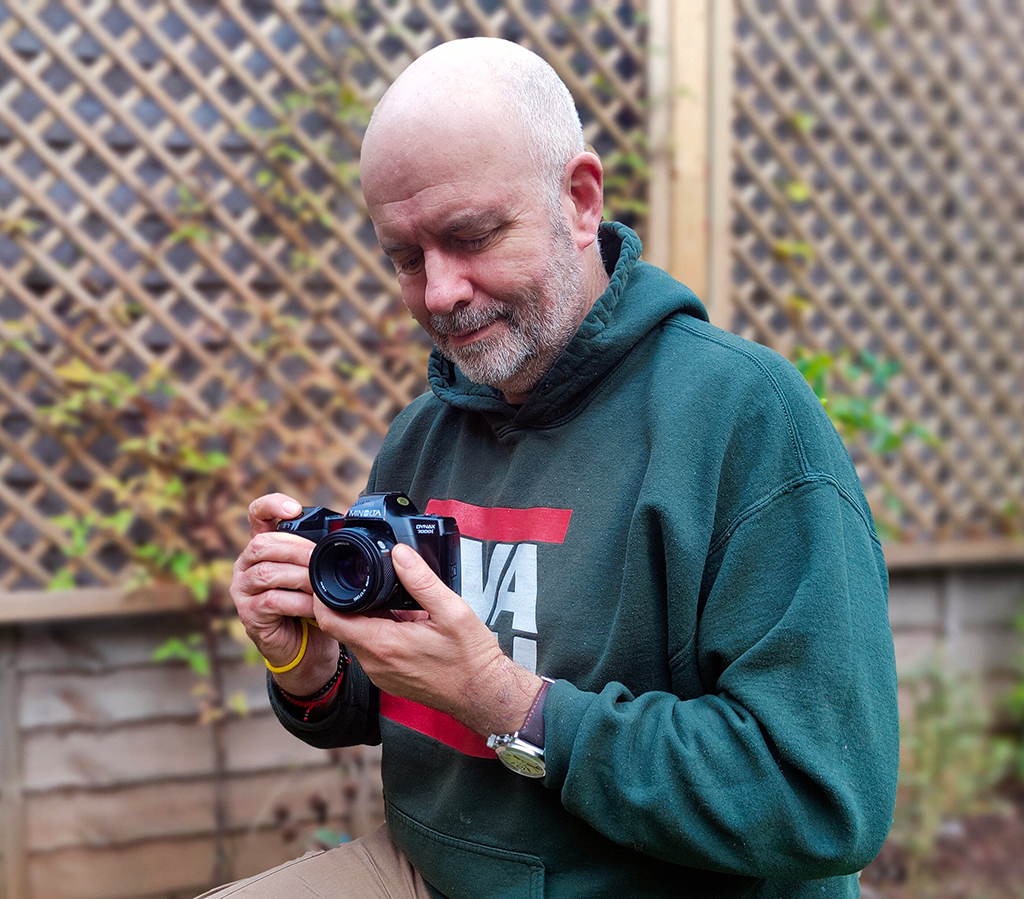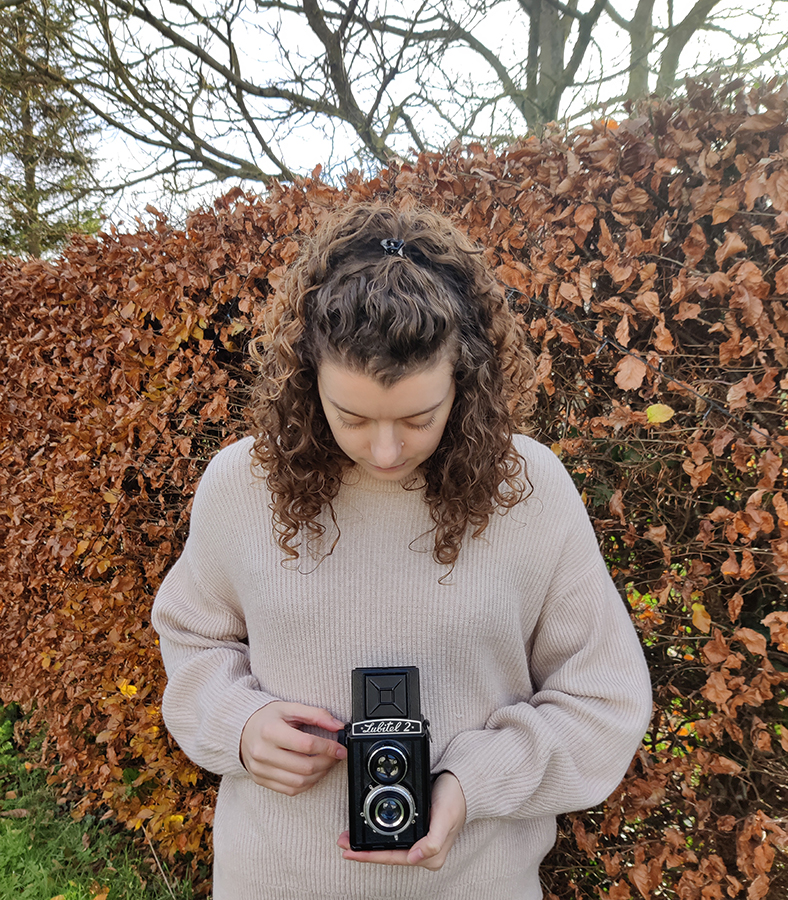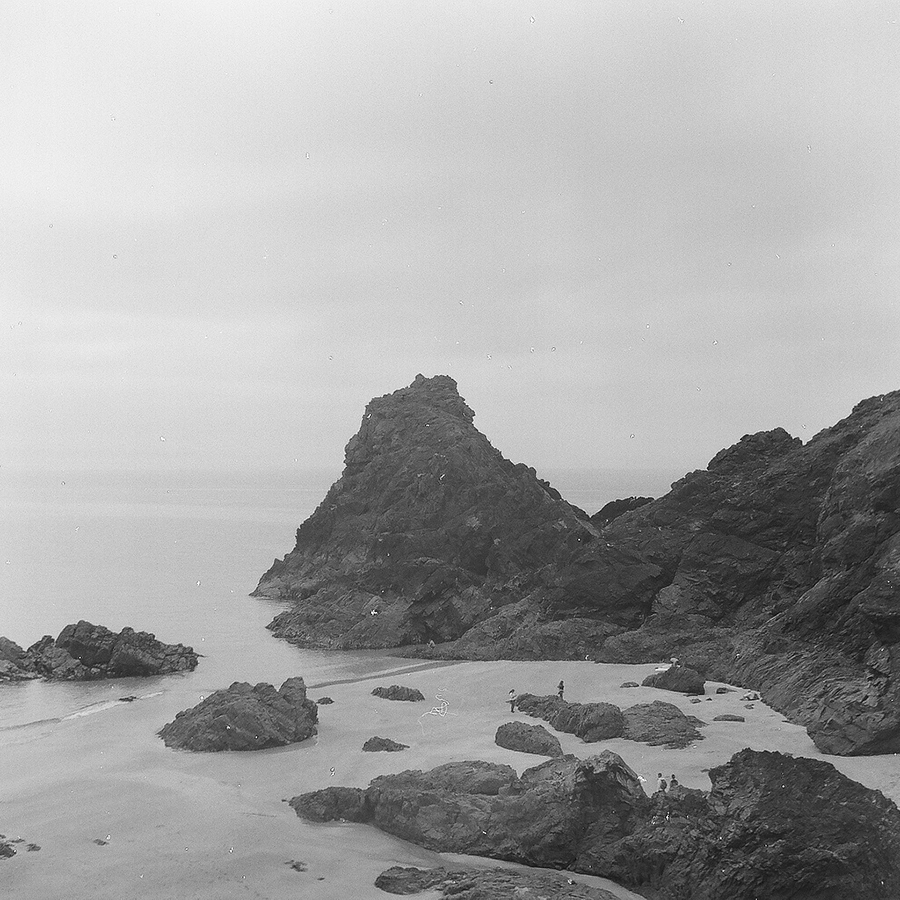You really don’t need to spend lots of money to get a very usable camera and lens. AP team members and readers share some of their film and digital cameras, all for under £100!
The trade in used cameras continues to boom, and it’s not hard to see why. With the top makers focusing on premium-priced, premium quality mirrorless models, many photographers have decided to jump off the upgrade cycle – after all, not everyone needs a camera and lens that is worth more than their car. Then there are the widely publicised supply chain problems affecting the delivery of the latest gear, caused by the continuing effects of the pandemic, the global semiconductor shortage and other headaches. Everyone loves a bargain, which is why we asked various members of the AP team to share their best used camera buys under £100, along with readers who replied to our call to arms on social media. As you’ll see you can find some really great buys, whether film or digital, and most of the cameras featured here come in well under £100.

Image credit: Nigel Atherton. The statue of Steve Ovett on Brighton seafront, taken on a £79 Olympus E-P1 in b&w mode
Even if you’ve recently shelled out for a much pricier camera, sub-£100 models can still make great back-up devices, or can be used for a specific genre, such as street; as one reader sagely noted, you won’t worry so much if said camera ends up being stolen or damaged, either. Before we get started though, here’s a quick note on where to buy.
While you can snaffle some great deals on eBay or Facebook Marketplace, we’d still recommend buying from a specialist used dealer. Even with a sub-£100 camera, you’ll get the peace of mind of a warranty. The camera will have been carefully checked over too, so you won’t end up with an expensive paperweight or something that will give up the ghost after two weeks. For more great used buys, check out our full guide to the best second-hand cameras.
Cameras for under £100: AP’s choice
Olympus E-P1, £79
Editor, Nigel Atherton
Olympus E-P1 at a glance
l 12MP Four Thirds Sensor
l 4032 x 3024 maximum resolution
l Contrast Detect AF
l ISO range: 200-6400
l Sensor shift IS
l 3fps continuous drive
l Fixed 3in LCD
l Weighs 355g
l Made from 2009 to 2011
I’d been looking for the ideal pocket camera to carry on dog walks etc, and as the owner of an Olympus OM-D system with multiple lenses, a PEN seems the logical choice. When I saw a white E-P1 for just £79 online, along with a 14-42mm f/3.5-5.6 ED lens, I was sold.
Based on the classic half-frame PEN F camera of 1963, the E-P1 was Olympus’s first Micro Four Thirds camera and an object of considerable beauty, especially (in my view) in white.
I was quite unkind about the E-P1 when it was launched in 2009, however; while acknowledging that it was an exquisite piece of engineering, I questioned why anyone would spend £800 on a camera with no viewfinder. £800 was serious money, but without a viewfinder the E-P1 wasn’t a serious camera. Especially since LCD screens at the time were almost impossible to use in bright sunlight or dark conditions, and the one on the E-P1 was quite poor even by the standards of the day.
Growing closer over time
Twelve years on I wondered if I’d feel the same but at £79 it was no longer a big investment so I could afford to be more forgiving. My sample came with the original kit zoom, the 14-42mm ED, but I already own the alternative kit option, the 17mm f/2.8 pancake. Although the zoom is optically superior the 17mm is much smaller and, since compactness was my goal, I was pleased to be able to sell the kit lens on and recoup all but £20 of my outlay.
The E-P1 is as delightful to look at and hold as I remember, but I’m a sucker for retro cameras. It’s surprisingly heavy for its size because it’s solid aluminium. Based largely on the company’s E-620 DSLR it boasts features such 3-axis image stabilisation, variable aspect ratios, art filters and video shooting.
There’s a hotshoe but no built-in flash and of course no viewfinder. To compensate Olympus provided a tiny hot shoe flashgun, the FL-14, in the box, and a hot-shoe-mounted optical viewfinder, the VF-1, as an (expensive) optional extra – though it was designed for the 17mm lens so was of little use with any other optic.
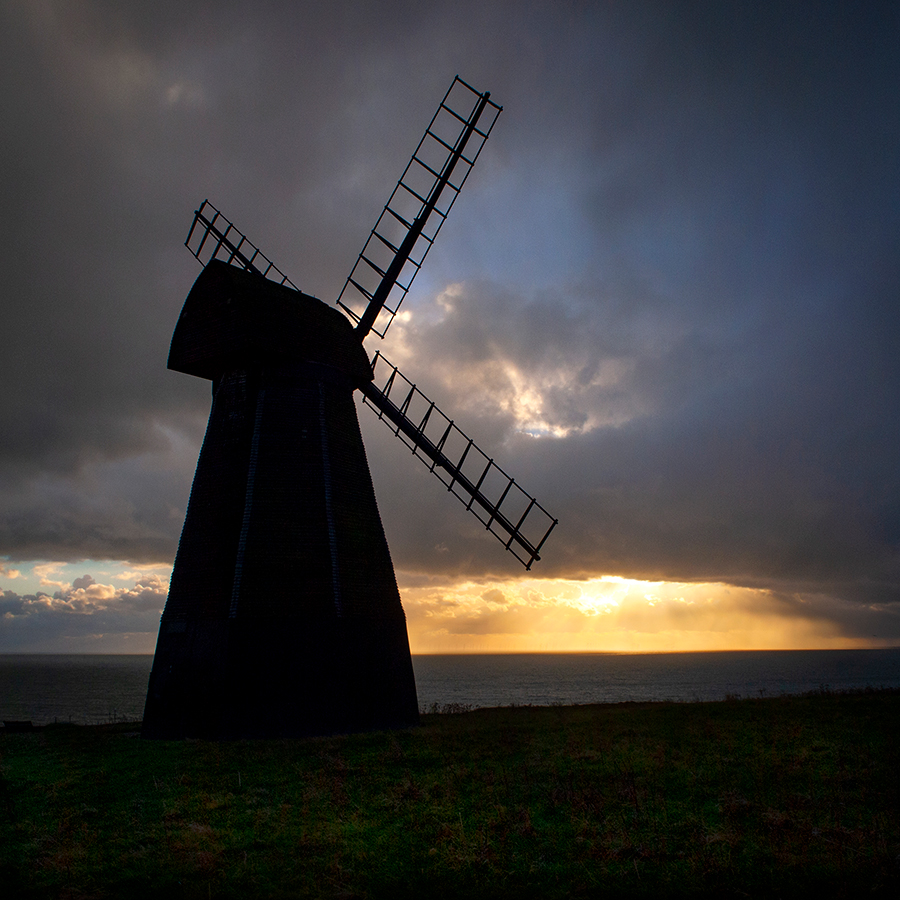
Image credit: Nigel Atherton. Rottingdean windmill handheld at ISO 400. Shadow areas can be quite noisy in low light
Achilles’ heel
I use the E-P1 paired with either the 17mm or the equally tiny 14-42mm EZ power zoom, both of which keep the profile fairly slim and pocketable. Unlike some later PENs the E-P1 has a proper input thumbwheel on the back for adjusting the exposure, but the lack of a viewfinder is still its Achilles’ heel. In bright sun you can’t see diddly on the LCD screen so you can only point the camera in the direction of the subject and hope for the best.
The solution would be to buy a VF-1 and stick with the 17mm lens, but these still fetch well over £100 on eBay – which is more than the camera cost. Fortunately bright sun is rare in England, and on cloudy days the screen is at least usable, so you get to see how sluggish the AF is. The pictures produced by the 12.3MP E-P1 were considered excellent at the time, with pleasing JPEGs right out of the camera. By modern standards they’re a bit noisy, especially above ISO 400, but still more than acceptable.
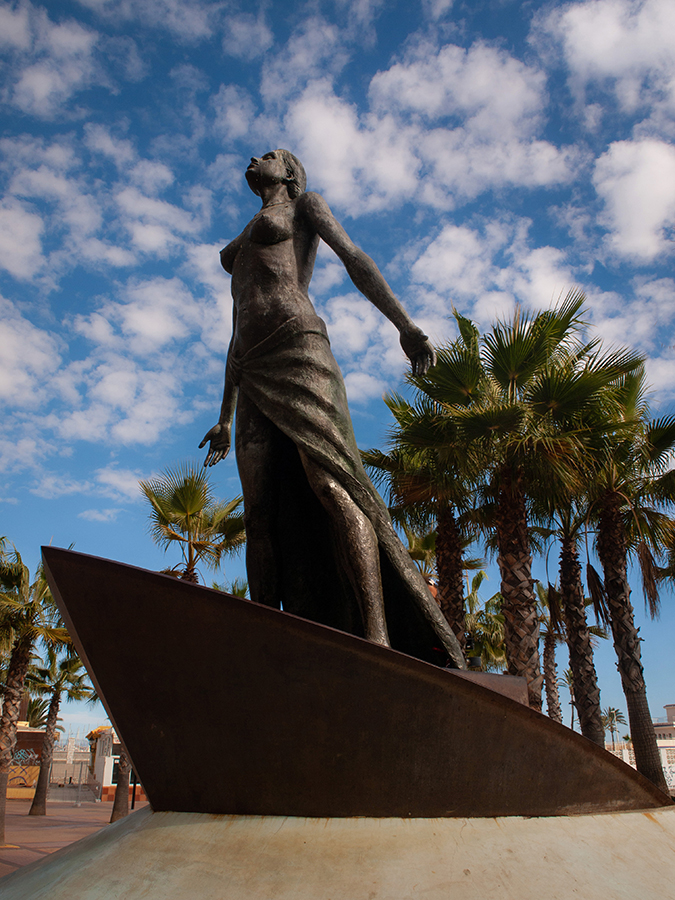
Image credit: Nigel Atherton. The E-P1 delivers nice JPEGs out of the camera. This is Fuengirola, Spain
Verdict
The E-P1 is lovely to look at, great to hold, fun to use, and the pictures aren’t at all bad. On the minus side, if I’m going to be forced to use a screen to compose my pictures I may as well use one which I can actually see in all lighting conditions – like the much bigger, brighter and vastly superior touchscreen one on my iPhone.
Unless I want to zoom in, or I need the superior image quality of the MFT sensor. Later models, from the E-P3 onwards, had a much better touchscreen and added the ability to accept a plug-in EVF (the VF-4). You can find used E-P3 bodies just under £100 but to add a VF-4 will cost you closer to £150 on top.
Minolta Dynax 7000i, £25
Deputy Editor, Geoff Harris
Minolta Dynax 7000i at a glance
l 35mm, phase-detection AF SLR
l Takes Minolta A-mount AF lenses
l PASM exposure modes, including Program Shift
l TTL multi-pattern metering
l TTL flash metering
l Automatic film transport system
l Optional ‘Creative Expansion’ cards
l Weighs 590g
l Made from 1988 to 1993
What does £25 buy the modern photographer? A couple of memory cards, a photography T-shirt, a cheap reflector… crikey, even a posh chocolate camera sets you back £35. I, however, snaffled the following for twenty-five of your British pounds: a minty Minolta Dynax 7000i SLR complete with original paperwork, a Minolta 3200i flashgun and a 35-80mm kit lens. Oh, and a nice shoulder bag. It just goes to show that you can still get a very usable film SLR and accessories for very reasonable money.
The Dynax 7000i was the most successful early iteration of Minolta’s AF film SLRs, coming out in 1988. While the AF technology was faster and more sensitive than found on its predecessor, it’s about as cutting-edge as a VHS player by today’s standards – forget anything fancy like face recognition. It still does the job in decent light, however, offering three AF sensors including wide focus and centre focus, and locking on to your subject with surprising speed.
Plastic fantastic
The Dynax also comes with PASM shooting modes, TTL flash, a maximum shutter speed of 1/4000sec, efficient metering modes, auto film load/rewind and some nifty extras that modern cameras could learn from – such as a Program mode button for a grab shot when you don’t have time to change settings.
Other features are best left to camera historians, such as the option to slot in cards with pre-set exposure settings for sports photography or macro, for instance. Much more useful for the modern shooter is the ability to mount a wide range of Minolta A-mount lenses, many of which have stood the test of time – and remain very popular with owners of compatible Sony digital cameras.

Image credit: Geoff Harris. A handy Program button for grab shots is one of several user-friendly additions
The kit lens I got with the camera is pretty basic, but I get better results from a 50mm f/1.7 and 135mm f/2.8 I already own (again, both cheap to buy). So why is the Dynax 7000i selling for the price of a pub lunch for two? While it is in many ways an underrated camera, a situation not helped by Minolta’s sad demise, it has to be said that the Dynax is no style statement.
The chassis is big, chunky and plastic (albeit tough plastic) and the camera looks about as iconic as a Bonnie Tyler barnet or Bros LP. Hipsters who are happy to sport a lower-specced Olympus or Nikon SLR from the ’70s would probably turn their nose up. Even amongst Minolta fans, the Dynax 7000i tends to be sniffed at, with purists preferring the higher-end A9 or the metal XD and CLE (the fruits of a partnership with Leica).
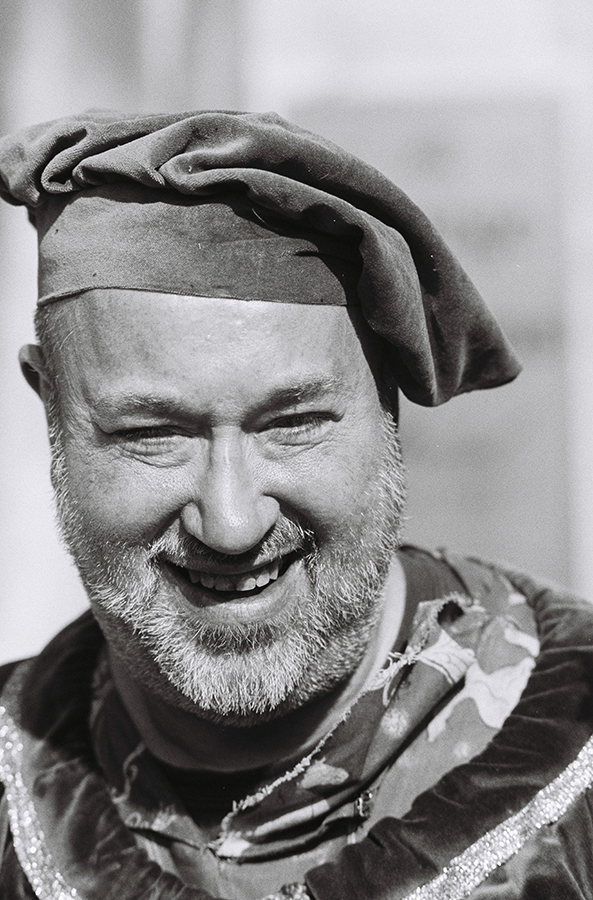
Image credit: Geoff Harris. The AF still locks on surprisingly fast – camera used here with the Minolta 135mm f/2.8 lens
Verdict
If you can live with the plastic build and intermittent low-light AF hunting, the Dynax 7000i is quite a bargain; under £30 for a body and lens is not unusual, and some unloved examples are even offered for free! The fast, automated film transport and basic AF come as a relief after faffing around with manual-everything film SLRs, and the camera is a cinch to use.
Of course, everything will go south if the onboard electronics fail, so it makes sense to shop around for a lightly used model. The Dynax is a good balance of modern convenience and analogue appeal, and for my money, this, and an affordable choice of nice glass, make it a steal for £25.
Lubitel 2, £48
Deputy Online Editor, Jessica Miller
Lubitel 2 at a glance
l Brand GOMZ/Lomo
l 120 film
l Manual focus
l Twin lens reflex camera
l Focal length 75mm
l Maximum aperture f/4.5
l Frame size 6x6cm
l Weighs 541g
l Made from 1954/5 to 1977
This little Lubitel (‘amateur’ in Russian) caught my eye during a trip to Notting Hill market in 2020, and I paid a very reasonable £48 for the camera and a case. I’ve previously used medium format cameras, but never got to grips with a TLR, so I was excited to get started with it.
The Lubitel 2 is a redesign of the original Lubitel model, an inexpensive Soviet medium format camera. Unlike the first model, the Lubitel 2 has a few improvements, including the introduction of a self-timer and flash synchronisation.
The camera takes 120 film (up to twelve 6×6 pictures) and having found the user manual online, I found that it was easy to set up. The camera can be operated handheld, but also has a tripod mount for low light and longer exposures. The film is loaded by opening the back of the camera using two lock springs.
Having triplets
On to the lens. The camera is equipped with a standard non-removable Triplet T-22 4,5/75 lens. The top lens of the camera is the viewing lens, and also has the focus ring which is connected to the taking lens with gears. It has a focus range of 1.3m to infinity, and f/2.8 aperture, which is considerably higher than the taking lens below and more accurate for focusing.
As you move the top lens to focus, the gears spin, linking with the taking lens and ensure both are in sync. Meanwhile, the aperture changing grip, shutter speed, self-timer, cable release and flash hubs are all positioned around the taking lens. On devices since 1959, like my version, the shutter speeds are 1/15sec, 1/30sec, 1/60sec, 1/125sec, 1/250sec and B.
The shutter is cocked by a small lever on the taking lens before pressing the shutter button just below it. Releasing the shutter is probably the most anticlimactic part of the experience of using this camera. For something that is relatively chunky and indiscreet, it has the slightest ‘snap’ as a shutter sound.
You wind the film on using a knob, with a small window on the back of the camera to show you the numbering on the film of how many exposures have been taken. Getting the camera into the correct position to take a levelled photograph can be challenging, but the benefit of this camera is the waist-level viewfinder; it is large and bright, and you can look down at it, which can make for more discreet photography.
There is a ground glass circle in the centre for focusing, plus a folding magnifier to ensure focus is sharp. There is a second way to compose your images, at eye level, by looking through the frame in the lens hood.
Verdict
Having owned the Lubitel for a while, I’m happy with it. It lives up to its ‘amateur’ name as it’s so easy to use – if you’re looking at getting into medium format, this is a cheap way of doing it. I very much enjoy using this camera and look forward to working with it more. The camera definitely makes you slow down and has really encouraged me to think about my photos and what I was taking.
Not only because I’m limited in the number of shots per roll, but in the effort each image can take. In my first roll of film I did have a few duff shots from the images not being in focus and also releasing the shutter too soon. If you’re interested in double exposures, this is something that could be done really easily and by accident if you don’t remember to wind on the film!
For these images I have used Ilford HP5 Plus 400 and Fomapan Creative 200. I am yet to try the camera with a colour film, but I’ll be sure to share the results on AP’s social media:
Cameras for under £100: Reader’s choice
Kodak 1911 No 2 Folding Pocket Brownie, £20
Adrian Grey

Cameras under £100: Kodak 1911 No 2 Folding Pocket Brownie. Instant retro cool points, great pictures too
‘Probably my biggest sub-£100 bargain is a Kodak 1911 No 2 Folding Pocket Brownie, which cost me a grand total of £20 from Oxford market. That’s right, 1911 – it’s the best old Kodak I’ve found, as it works beautifully. You can still pick up these cameras relatively easily, too. I love the quality of images for such a simple camera – see the sample shot below.
You still have a little bit of control: there are three settings including three f-stops, so it is a bit more advanced than a Box Brownie. The lens is nice and sharp too, though the viewfinder is appalling. The camera takes ordinary 120 film and people are really interested to see you using it.
You can also use colour film in it – the lens is set behind the shutter, so the risk of flare is reduced. You just need to remember to have a set procedure when using this camera, and wind the film on properly. Moving back to the digital age, I also still get surprisingly good results from a Nikon Coolpix, an odd-looking 3MP device which comes with a wacky wideangle adapter. You can easily pick one up for under £70.’
Nikon D200, £64
Jorgen Anderson
‘I own a Nikon D200, which I bought from a specialist used dealer online for just £64. Initially I wanted a cheap camera for some street photography work, but something that had settings that you can adjust quickly when on the move. Above all, the camera needed to be cheap, so if it ended up being damaged or stolen I wouldn’t be too upset. Camera theft is a big problem in a lot of countries now, and as a visually disabled photographer, someone may think I am an easy target (wrong, ha ha!).

Image credit: Jorgen Anderson. Jorgen paired the D200 with an equally cheap lens for a great budget combo
‘Despite only having a 10MP sensor, the D200 is not a bad investment in my opinion. I’m not planning on supersizing any photos in print, so for showing images on screens or online/social media, I’m happy enough with it. I ended up pairing the D200 with a Nikon 18-70mm f/3.5-4.5G AF-S ED which cost £59. Again, I’m happy with this lens. I’ve also purchased two Olympus OM-D E-M10’s (16MP), both of which had some small faults. I can live with them though, as one cost £89 and the other only £69.’
Canon EOS 450D SLR, £60
Nigel Cliff
‘My best sub-£100 bargain is the Canon EOS 450D SLR, which I bought for £60 and paired with a Canon 28-105 f3.5/4.5 USM. Even though I am now mainly a mirrorless shooter, I still hang on to this camera, particularly as I really like the lens. I favour the 450D’s size and dimensions – it’s not much bigger than my mirrorless cameras.
I also like the colours you get straight from the 450D; despite its age they seem as good as anything from more modern cameras. The main drawback of the EOS 450D is the ISO performance. This is a camera you can only use in decent light because anything you shoot at ISO 800 or higher is seriously noisy.’
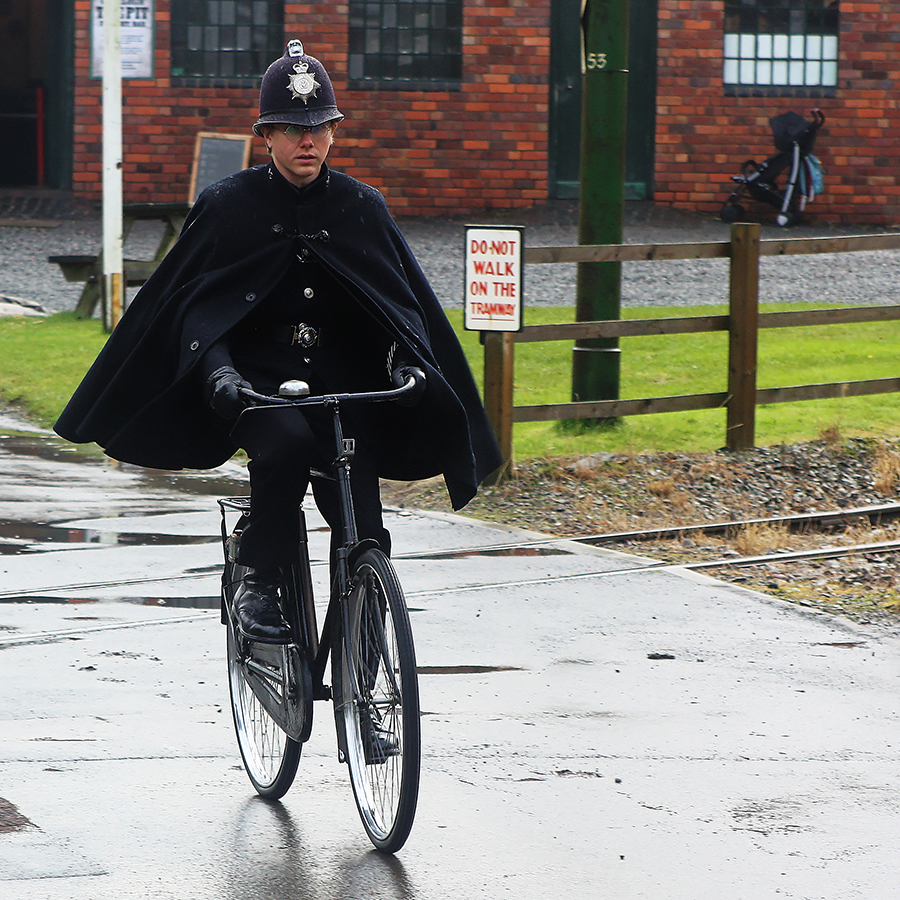
Image credit: Nigel Cliff. In decent light you can get great results – just beware high ISO noise, counsels Nigel
Further reading

